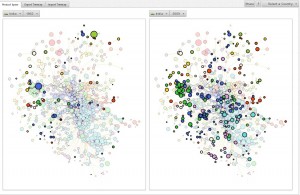So says the Food and Agriculture Organization (FAO) of the United Nations in the May issue of its Global Food Prices Monitor:
“The FAO Food Price Index averaged 232 points in April 2011, virtually unchanged from the revised March estimate, 36 percent above April 2010, but 2 percent below its peak in February 2011.”
Still waters run deep, however, as this apparent food price stability masks a considerable amount of heterogeneity:
“A sharp increase in international grain prices in April more than offset declines in dairy, sugar and rice, while oils and meat prices were mostly unchanged. The FAO Cereal Price Index averaged 265 points, up 5.5 percent (14 points) from March and 71 percent from April 2010. The FAO Oils/Fats Price Index which had fallen by 7 percent in March, was nearly unchanged in April. The FAO Sugar Price Index averaged nearly 348 points, down 7 percent (or 25 points) from March and 17 percent below its January record. The FAO Dairy Price Index averaged 229 points, down 2.4 percent from March. The FAO Meat Price Index remained stable at a record level of nearly 173 points.”
For the poor in developing countries, whose diets mostly consist of carbohydrates, this is far from good news. The recent food riots in Burkina Faso and Uganda seem consistent with this pattern of changing food prices.
